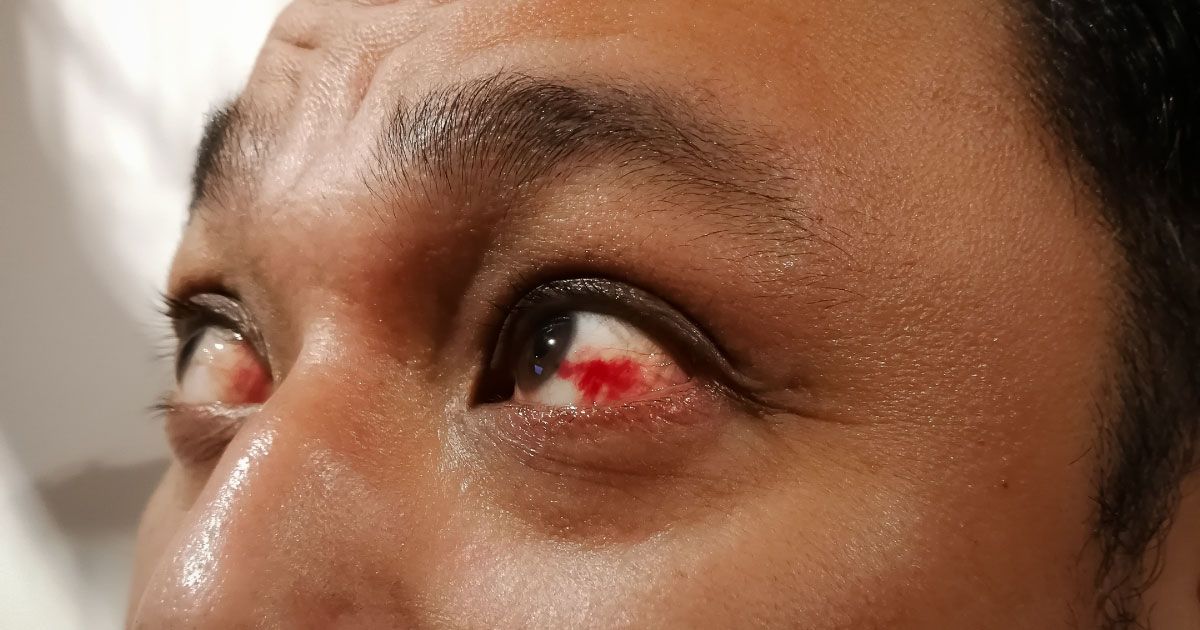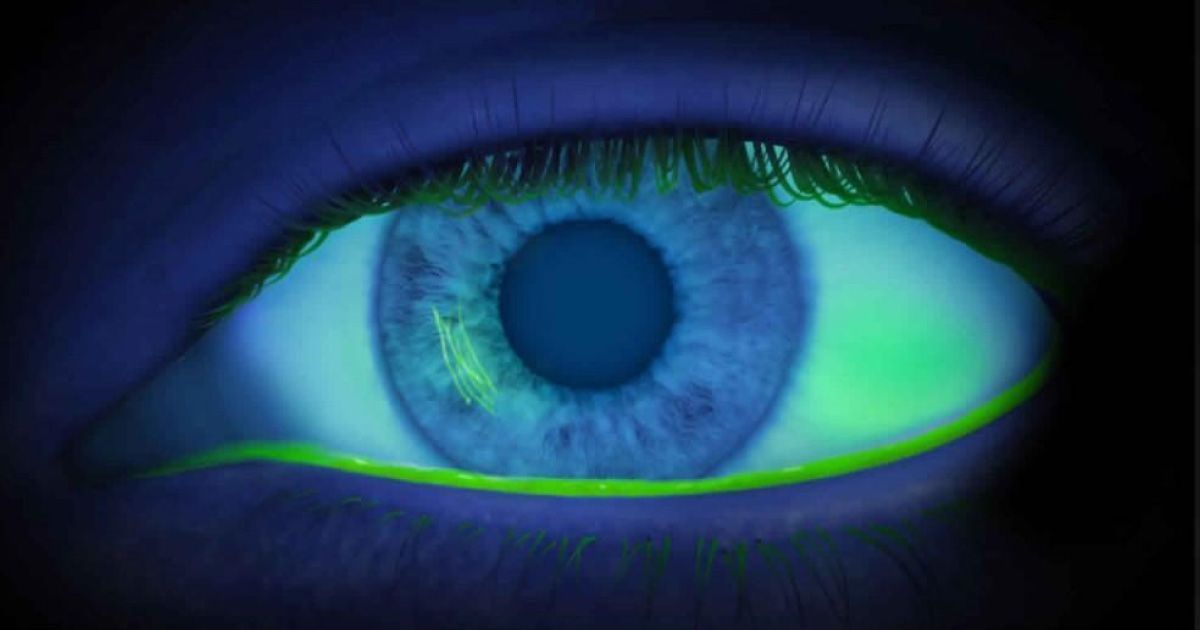The Red Spot Mystery: What to Know About "Popped" Eye Vessels

Read time: 4 minutes
A bright red patch suddenly appears on the white of your eye. It looks dramatic, maybe even alarming — but surprisingly, it’s likely nothing serious. This is what’s commonly called a “popped” blood vessel in the eye, known medically as a subconjunctival hemorrhage. While the name might sound intense, it’s usually painless, harmless, and more of a cosmetic concern than a medical emergency.
So what exactly causes this eye phenomenon, and what should you do when it happens?
What Is a Subconjunctival Hemorrhage?
The eye is filled with a network of delicate blood vessels. When one of these tiny vessels breaks underneath the conjunctiva — the clear surface covering the white part of your eye — it leaks a small amount of blood, creating that unmistakable red blotch. Because the conjunctiva doesn’t absorb blood quickly, the redness stays visible until your body gradually reabsorbs it. It’s similar to a bruise on your skin, but without the swelling or pain.
What Causes a Blood Vessel to Burst in the Eye?
Subconjunctival hemorrhages can happen for many reasons, most of them benign. Common causes include:
- Sudden pressure changes: Coughing, sneezing, heavy lifting, or vomiting can all spike blood pressure briefly and cause a vessel to rupture.
- Excessive vomiting: Forceful retching dramatically increases pressure in the head and neck, making blood vessels more likely to break — especially around the eyes.
- Eye trauma: Rubbing your eyes too hard or accidentally poking them can damage a vessel.
- Straining: Constipation or any activity that involves bearing down can also contribute.
- High blood pressure: Chronically elevated blood pressure can weaken vessel walls, making them more prone to breaking.
- Blood thinners or aspirin: These medications can make even a minor rupture look worse and last longer.
- Medical conditions: Rarely, conditions that affect clotting or increase fragility of blood vessels—like diabetes, blood disorders, or certain infections — can be behind frequent episodes.
Frequent burst vessels could point to an underlying health issue like hypertension. If you have a history of high blood pressure, it's worth exploring how high blood pressure affects your eyes to better understand the connection between systemic health and eye wellness.
What Are the Symptoms?
Most people notice the condition when they look in the mirror or someone else points it out. Here’s what to expect:
- A bright red or dark patch on the white of the eye (sclera)
- No pain or vision changes
- Sometimes a mild sense of fullness or scratchiness, but no discharge
It’s important to remember that not every red eye is harmless. If you experience pain, significant vision changes, or the red area covers the entire eye — or if you’ve had repeated hemorrhages — you should consult your eye doctor.
To learn more about when red eyes could be something more serious, check out our guide to common eye emergencies.
How Is It Treated?
Fortunately, no treatment is usually necessary. The body will naturally reabsorb the blood over 1 to 2 weeks, similar to how a bruise fades. You may notice the red spot change colors (from red to brown or yellowish) as it heals.
To support recovery:
- Use lubricating eye drops if you feel irritation or dryness
- Avoid rubbing your eyes
- Monitor your blood pressure, especially if hemorrhages happen frequently
- See an optometrist if it doesn't improve within 2 weeks or happens repeatedly
If the surface of your eye feels irritated, you may be dealing with additional dryness or inflammation. Learn how to keep your eyes comfortable with simple hydration strategies in our post on dry eyes and eye irritation.
If you're on blood thinners or aspirin, discuss the episode with your prescribing doctor — but never stop medication without medical advice.
Should You Be Worried?
While it can look startling, a popped blood vessel in the eye is rarely serious. However, frequent occurrences might signal an underlying issue that deserves attention — like hypertension or a blood-clotting disorder. If you’re getting them often, don’t ignore it.
For people with no other symptoms and a one-time occurrence, rest assured: it's usually just a temporary and harmless visual issue.
The Takeaway
A popped blood vessel in the eye may look severe, but it’s usually painless and resolves on its own within two weeks. Often caused by sudden increases in pressure — from sneezing, vomiting, or even straining — it’s rarely linked to anything dangerous. Still, if it becomes a frequent problem, or you notice pain or vision changes, a professional eye exam is essential to rule out more serious conditions.
If you're ever unsure, Urban Optiks is here to help you see clearly and stay healthy — schedule an eye evaluation for peace of mind and expert care.
Share this blog post on social or with a friend:
The information provided in this article is intended for general knowledge and educational purposes only and should not be construed as medical advice. It is strongly recommended to consult with an eye care professional for personalized recommendations and guidance regarding your individual needs and eye health concerns.
All of Urban Optiks Optometry's blog posts and articles contain information carefully curated from openly sourced materials available in the public domain. We strive to ensure the accuracy and relevance of the information provided. For a comprehensive understanding of our practices and to read our full disclosure statement, please click here.


















